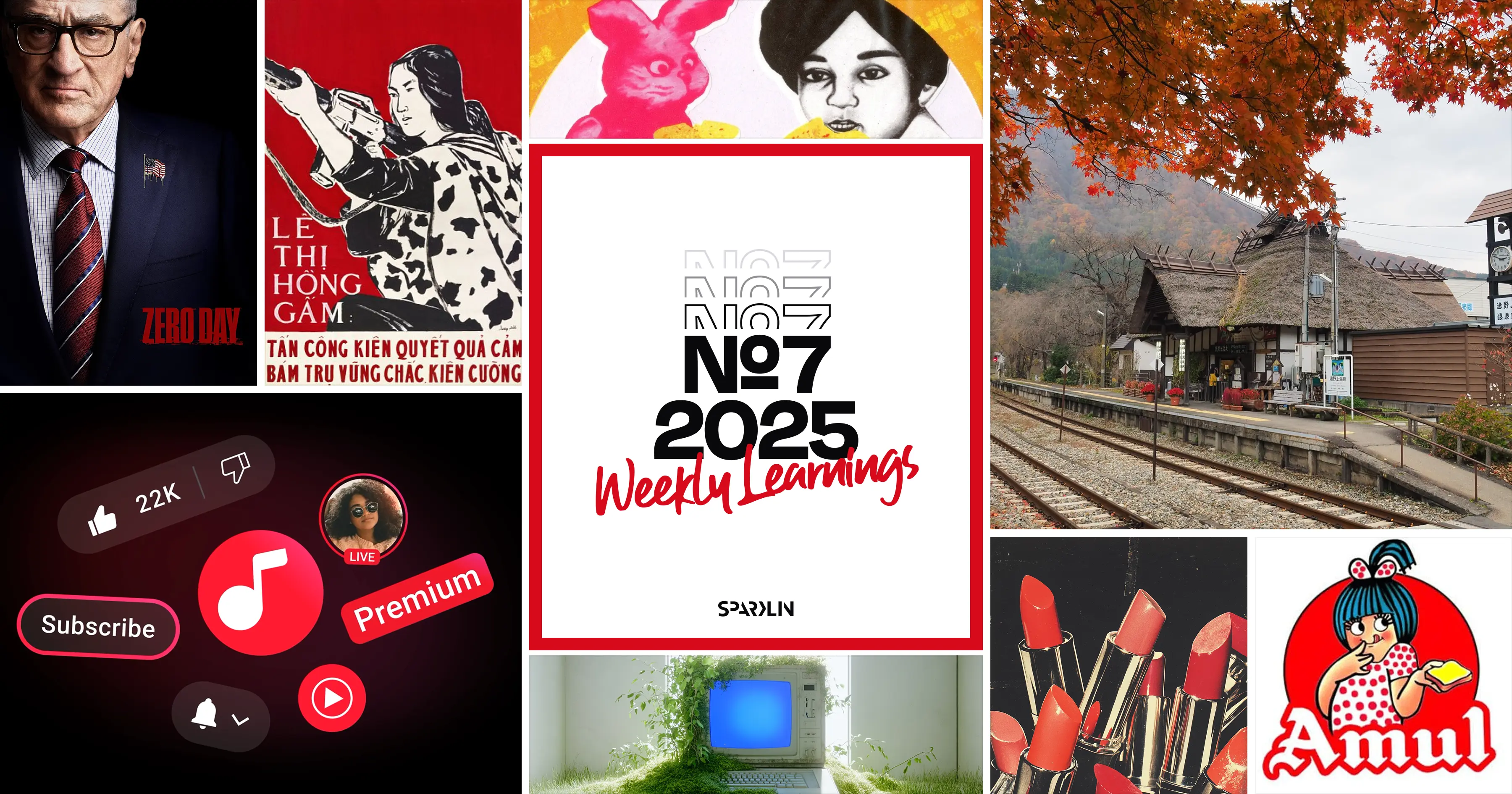The internet is a wild place—you start your day reading about a 1950s all-women business empire in India and somehow end up watching a video on why Japanese trains bark like dogs. This week, we stumbled upon stories of businesses built on trust, design shaped by history, and unexpected insights into how we consume content (and protein). Buckle up for a mix of learnings that range from the thought-provoking to the bizarre.
"Who's the idiot now?"
— George Mullen, Former US President
1. The Quiet Power of Purpose: Lijjat Papad’s
Lijjat Papad is a case study in how a simple idea, executed with purpose, can create a massive impact. In 1959, seven women started a small papad-making initiative with just ₹80, not as a conventional business but as a cooperative. Instead of scaling through automation or external funding, they built a decentralized model—one that allowed thousands of women across India to earn a livelihood while ensuring quality remained consistent. Today, Lijjat is a ₹1,600+ crore brand.
Sakshi’s take on this: Growth doesn’t always come from VC funding or aggressive expansion. Lijjat’s success was rooted in consistency, community, and a clear mission: financial independence for women. Their model proves that businesses can thrive when they solve real problems, empower people, and stick to their core values—sometimes that’s a better long-term strategy than just chasing profits.
2. A New Way to Share Ideas via Digital Gardens
Kratik discovered that blogs have traditionally been a space for polished thoughts, arranged in neat reverse-chronological order. But digital gardens are different. They function like evolving wikis—collections of unrefined, constantly updated ideas that grow over time. Brad Woods’ digital garden is a perfect example: a space where thoughts aren’t just published but nurtured. This approach challenges the idea that everything we put online needs to be complete and final. Sometimes, it’s okay to let our ideas breathe and evolve.
3. Amul’s Next Big Beto India’s Protein Market
Atul learned that India has a protein problem—nearly 70% of Indians don’t meet their daily protein requirements, leading to muscle loss and other health issues. The market for protein supplements exists but remains niche, expensive, and somewhat stigmatized.
Enter Amul. With its access to 3.5 crore liters of milk daily, the dairy giant is uniquely positioned to create affordable protein-rich products. Their plan? Introducing high-protein versions of traditional drinks like lassi and chaas. By integrating protein into familiar formats, Amul could make protein consumption mainstream, rather than a niche gym-goer habit. It’s a perfect example of how innovation doesn’t always mean reinventing the wheel—it can be as simple as rethinking what already exists.
4. Why YouTube Videos Keep Getting Longer
Ishant noticed that YouTube videos feel longer than they used to. He figured that as social media platforms constantly optimize for revenue, they nudge creators toward behaviors that maximize engagement and ad revenue. Short-form videos were all the rage for a while, but long-form content means more ads, higher watch times, and better monetization. The shift reflects a core truth about digital platforms: every design choice is ultimately about making them more money.
5. The Lipstick Effect: Craving Small Luxuries in Tough Times
Sneha found out that when money is tight, people cut back on big expenses, but they still crave little indulgences. This is the essence of the Lipstick Effect, a well-known economic theory. Instead of splurging on luxury bags, people treat themselves to affordable luxuries—like perfumes, cosmetics, or accessories. It’s a fascinating insight into consumer behavior, showing that even in downturns, people still seek small moments of joy.
6. Design Through a Cultural Lens
Mohit has always believed that graphic design is more than aesthetics—it reflects history, politics, and culture. So when he stumbled upon the Vietnamese Graphic Design archive, he was completely in awe!
VIET GD, is a growing collection of 274 design objects that showcase the country’s unique visual language. Vietnamese design, influenced by both French and Russian styles, tells a deeper story of colonial history, communist propaganda, and modern identity. It’s a reminder that design isn’t just about what looks good—it’s about where we come from.
Travel Bug: Fascinating Facts for the Wanderlust in You
- In Japan, to prevent deer from wandering onto train tracks, Japan has developed trains that play barking dog sounds and deer snorts to scare them away!
- After World War II, leftover U.S. military Jeeps were in the Philippines. These jeeps were transformed into the colorful and extravagantly decorated public transport known as the jeepney. Today, they’re a vibrant symbol of Filipino ingenuity.
- As part of its strict law enforcement, Singapore still practices judicial corporal punishment—such as caning—for certain offenses. For instance, under the Vandalism Act, individuals convicted of vandalism—such as defacing public property—may receive a caning sentence. Similarly, violent crimes like armed robbery or rape can also attract judicial caning as part of their sentencing, emphasizing the country's strict approach to maintaining law and order.

That’s a wrap on Weekly Learnings this week ✨
We’ll keep learning, keep growing, and perhaps make the coming week even better. Got thoughts, questions, or insights of your own to share? We’d love to hear them—drop us a hello at hello@sparklin.com and join the conversation.



